 August 7, 2014 John E. Ross, KD8IDJ, Editor
| ||||||||||
ARRL Board Lauds "Unforgettable Milestone," Formalizes LoTW Policy The ARRL Board of Directors dealt with a variety of matters when it met in Hartford, Connecticut, on July 21 and 22. ARRL President Kay
Craigie, N3KN, chaired the session. Reflecting the afterglow of the ARRL National Centennial Convention that concluded a couple of days earlier, the Board commended and thanked the ARRL staff and Convention volunteers for "their devotion and service, contributing to a truly memorable celebration of this unforgettable milestone in the life of the ARRL." The resolution took note of the "countless" hours staffers spent, in addition to their routine responsibilities, preparing for and running the convention. The Board also cited the essential role of "many dedicated volunteers" before, during and after the convention. Emergency Communications
Citing the inspiring Convention Banquet speech by Federal Emergency Management Agency (FEMA) Administrator Craig Fugate, KK4INZ, the Board resolved to reaffirm its "commitment and desire to further improve and enhance Amateur Radio's participation and standing in emergency communications for the benefit of the nation's emergency response agencies and the American public." During the convention, the ARRL and FEMA signed a Memorandum of Agreement that, the resolution said, would "strengthen FEMA's partnership with ARRL and build upon our work to expand emergency communications capabilities and the use of Amateur Radio in emergency management." Logbook of The World
"The integrity of LoTW must support the prestige of those awards that depend on it, such as DXCC," the policy states. "The goals of 'ease of enrollment' and 'ease of use' must be balanced against the requirement of maintaining an extremely high level of integrity." The policy calls on ARRL's Information Technology Department "to keep the processing queue as short as possible," but added that speedy processing is secondary to LoTW's primary goal of authenticating contacts and that LoTW "is not guaranteed to be a 24/7 application."
The policy says that while fees currently are only required when contact credits are redeemed toward supported awards, "Premium services may be developed for LoTW which would require user fees." Also related to operating awards, the Board agreed to modify some DXCC Rules to clarify the appointment procedure and eligibility of DXCC card checkers. Referred to Committee The Programs and Services Committee (P&SC) is to closely examine the issue of remotely controlled stations, noting that these "pose both opportunities and challenges." The P&SC would "consider the possible advantages, disadvantages, and any potential ethical issues as they relate strictly to the DXCC program" and report its findings by the Board's January 2015 Annual Meeting. The Executive Committee is to study the possibility of seeking limited RTTY/data privileges for Technician licensees on 80, 40, and 15 meters. Other Business In other business, the ARRL Board of Directors:
ARRL Board Names Award Winners, Honorees The Board named award winners and honorees during its July 21-22 meeting in Hartford, Connecticut.
Early Efforts on Behalf of "The Amateur Radio Parity Act" H.R. 4969 Bearing Fruit Initial efforts to secure additional co-sponsors for "The Amateur Radio Parity Act of 2014" -- H.R. 4969 -- are starting to produce results. As of August 5, 17 co-sponsors had signed onto the bill, which was "With Congress on break for August, we are encouraging our members to meet with their representatives while [lawmakers] are home on break in their districts, and urge their support for H.R. 4969," said ARRL Regulatory Information Manager Dan Henderson, N1ND. "We're very pleased with the initial response, but the more noise we make, the better our chances." He emphasized that a successful outcome requires as many co-sponsors as possible, and that's where ARRL members come into play in their role as voters and constituents. The League's H.R. 4969 page contains information and guidance for clubs and individuals promoting efforts to gain co-sponsors for the measure by contacting their members of Congress. The web page includes a sample letter to a member of Congress and a list of "talking points." For in-person visits, the League recommends organizing small teams of knowledgeable, articulate radio amateurs to approach lawmakers one to one to plead their case. The limited PRB-1 pre-emption currently applies only to state and municipal land-use ordinances. The FCC has indicated its reluctance to provide the same legal protections from private land-use agreements -- often called covenants, conditions, and restrictions or CC&Rs -- without direction from Congress.
H.R. 4969 has been referred to the House Energy and Commerce Committee. Rep Greg Walden, W7EQI (R-OR), chairs that panel's Communications and Technology Subcommittee, which will consider the measure. The League had approached Walden, who helped to engineer the bill. Henderson said that in response to the "Get Behind H.R. 4969" effort at the Centennial Convention and last month's edition of the Legislative Update Newsletter, more than 2000 individuals drafted letters to their congressional representatives, urging them to co-sponsor the bill. He asked League members to e-mail or mail letters directed to their US House of Representatives member to ARRL Headquarters for forwarding. E-mails will be printed beforehand, he noted. Henderson explained that this approach speeds delivery, since individual pieces of mail to members of Congress are scanned for threats. Henderson said he's already received another 200 or so letters to forward to House members. Send letters to H.R. 4969 Letter Campaign, ARRL, 225 Main St, Newington, CT 06111. If e-mailing, include "H.R. 4969" in your subject line. All correspondence must be signed and include the constituent's mailing address. Read more. W1AW Centennial Operations Relocate on August 13 (UTC) The ARRL Centennial W1AW WAS operations taking place throughout 2014 from each of the 50 states are now in Vermont (W1AW/1) and New Jersey (W1AW/2). They will relocate at 0000 UTC on Wednesday, August 13 (the evening of August 12 in US time zones), to Oklahoma (W1AW/5). Only one state will be active during the week of August 13-19. During 2014 W1AW will be on the air from every state (at least twice) and most US territories, and it will be easy to work all states solely by contacting W1AW portable operations.
Working W1AW/x from each state is worth 5 points per mode/contact, even when working the same state during its second week of activity. To earn the "Worked all States with W1AW Award," work W1AW operating portable from all 50 states. (Working W1AW or W100AW in Connecticut does not count for Connecticut, however. For award credit, participants must work W1AW/1 in Connecticut.) A W1AW WAS certificate and plaque will be available. The ARRL has posted an ARRL Centennial QSO Party leader board that participants can use to determine how many points they have accumulated in the Centennial QSO Party and in the W1AW WAS operations. Log in using your Logbook of The World (LoTW) user name and password, and your position will appear at the top of the leader boards. Results are updated daily, based on contacts entered into LoTW. AMSAT Announces Fox-1C Launch Opportunity and Fund Drive AMSAT-NA has announced a third-quarter 2015 launch opportunity for its Fox-1C CubeSat and has kicked off a fund drive to cover the costs of putting the Amateur Radio satellite into space. AMSAT reports that it has teamed with Spaceflight Inc for integration and launch services The Phase 1 Fox satellites are 1-Unit CubeSats, each including an analog FM repeater that will permit simple ground stations using a hand-held transceiver and antenna to make contacts through the satellite. The Phase 1 CubeSats also offer high-speed digital mode data communication capability. AMSAT said it plans to release further details on the Fox-1C satellite and the 2015 launch as they become available. AMSAT has set a fund-raising goal of $125,000 to cover the cost of the launch contract and additional Fox-1C construction and testing materials. Read more. -- AMSAT News Service, AMSAT website Maritime Mobile Service Network Aids in Separate Land-Based Emergencies While best known for its efforts to aid voyagers on the high seas, the Maritime Mobile Service Network (MMSN) occasionally helps out in "Truckers' CBs didn't reach anyone outside the canyon. Only ham radio worked!" Molnar said later. Porter placed the net in emergency status, pinned down details on the wreck, and notified authorities. Nevada Highway Patrol troopers were dispatched to the scene. There were no injuries, but the highway was completely blocked in both directions, and some of the tractor-trailer's perishable cargo ended up scattered on the roadway.
Porter, the NCS, later said that he was "quite surprised" to get a call regarding a land-based emergency but also understood why this might happen, given that the Net's availability on 14.300 MHz daily from 1600 to 0200 UTC, and the fact that many hams are aware of its existence. Several weeks earlier, on June 18, MMSN NCS Donald Plunkett, VA6FH, was called by a trucker-ham who reported a serious motor vehicle accident involving a truck and a car outside of Stockton, Texas. The station calling in requested that the net contact the Texas Department of Public Safety, since he was outside of cell phone and VHF/UHF repeater range. Emergency units were sent to the scene. Read more. -- Thanks to Hurricane Watch Net Manager Bobby Graves, KB5HAV SKYWARN Volunteers Muster as Severe Weather, Tornado Hit Southern New England When severe weather erupted in Southern New England on July 27 and 28, SKYWARN volunteers went on alert to help forecasters track conditions and, afterward, to assist authorities with assessing damage. "The storm was tracked using the SKYWARN self-activation protocol," he said. The system subsequently generated an EF-2 tornado, which swept through Revere, Massachusetts, leaving a swath of significant damage in its wake. "Within 15 or 20 minutes of the storm's passage, the Amateur Radio SKYWARN network received reports of many trees and wires down and structural damage in Revere," Macedo said. "Other pockets of straight-line wind damage and flash flooding occurred elsewhere in Southern New England, rounding out a 2-day stretch of severe weather in the region." SKYWARN Spotters Jim Palmer, KB1KQW, and Marek Kozubal, KB1NCG, worked with National Weather Service-Taunton Warning Coordination Meteorologist Glenn Field, KB1GHX, local first responders, and Massachusetts Emergency Management Agency personnel in surveying the damage. All are associated with WX1BOX, the Amateur Radio Station at NWS-Taunton.
According to the NWS-Taunton office, the tornado, with winds estimated at between 100 and 120 MPH, affected both Chelsea and Revere, but most of the damage was in Revere. The NWS said the tornado traveled 2 miles, leaving a path some 3/8-mile wide. The Weather Channel said the tornado affected a 3-square mile residential area of Revere, damaging more than 60 homes and business and leaving upward of 3000 residences without power. A temporary shelter was opened to handle those displaced by the storm. In addition, significant flash flooding affected the Boston Metro West region, with rainfall of up to 3.5 inches recorded in less than an hour. Macedo said another round of severe weather occurred later in the day on July 28, affecting northwestern and north-central Massachusetts through southern New Hampshire, with additional severe thunderstorms taking place across north-central Connecticut. "These severe thunderstorms caused pockets of flash flooding and straight-line wind damage," Macedo's report said. July 28's severe weather events followed an 8-hour severe weather episode that had affected parts of Western and Central New England the previous day. Read more. California Hams Activate to Support Shelter Communications Following Wildfire Amateur Radio volunteers in California's Tuolumne County assisted local emergency managers and the American Red Cross by supporting communication at a shelter in Groveland, set up in the wake of the El Tuolumne County ARES Emergency Coordinator Carl Croci, NI6Z, reported that several radio amateurs responded. A UHF and VHF repeater were cross-banded to cover the necessary expanse between Fresno, site of the Red Cross Headquarters, and the shelter site in Groveland. Radio amateurs were able to stand down the following day after a 20 hour communications emergency. Eight pieces of traffic were handled. -- Thanks to Carl Croci, NI6Z, and Fresno County ARES EC/RACES Radio Officer Glen Caine, N6HEW ARRL DXCC and Awards Manager Bill Moore, NC1L, Recuperating Following Accident ARRL DXCC and Awards Manager Bill Moore, NC1L, was seriously injured in a single-car accident on the afternoon of Thursday, July 3.
Moore suffered a broken neck and other injuries and is paralyzed from the chest down. He is stable and recuperating in a Newington rehabilitation facility. There is no timetable for his return to work at ARRL Headquarters. DXCC and awards questions that would normally be handled by Moore should be sent to one of the e-mail addresses listed on the DXCC Contacts web page. Cards and get-well wishes are appreciated, and should be sent to Bill Moore, NC1L, 92 Reservoir Rd, Newington, CT 06111. ARRL 10 GHz and Up Contest Weekends Are Just Around the Corner! Experimentation, building, and contesting all come together on the weekends of August 16-17 and September 20-21, when radio amateurs can competitively explore the microwave portion of the radio spectrum during the 2014 ARRL 10 GHz and Up Contest. The contest period on both weekends runs from 6 AM local time on Saturday until midnight local time on Sunday.
The exchange is your six-character Maidenhead Locator or "Grid Square," (eg, FN64co). Participants earn points based on the distance of each contact. Operating from several locations during the event not only is allowed, it's encouraged. Many stations will run just a few hundred milliwatts, using parabolic dishes to maximize gain. Along with line-of-sight contacts -- often made from mountaintops -- stations may make use of tropospheric and rainfall scatter or bounce signals off large objects, such as buildings or mountains. A list of resources with more information is available. Complete rules and entry forms are on the ARRL website. All logs must be e-mailed or postmarked no later than 2359 UTC on Tuesday, October 21, 2014. Send paper logs to ARRL 10 GHz and Up Contest, 225 Main St, Newington, CT 06111. ARRL RTTY Rookie Roundup Not Just for Newbies The ARRL Rookie Roundup returns to RTTY Sunday, August 17, 1800 UTC through 2359 UTC. This event provides a unique opportunity for new operators (licensed 3 years or fewer) to gain RTTY contesting skills. Rookie Roundup events take place three times a year: SSB in April, RTTY in August, and CW in December.
Rookies call "CQ RR" (CQ Rookie Roundup), while veteran ops call "CQ R" (CQ Rookies). Exchange the call sign of the station you're working, your call sign, your first name, the two-digit number of the year first you were licensed, and your state, Canadian province, Mexican call area, or DX. RTTY Rookie Roundup participants can log the contest using either the paper forms provided on the Rookie Roundup web page or by using the real-time In The Log website. Once the contest is over and you've calculated your score, complete the Rookie Roundup Online Score Submission Form to submit your score; no logs are necessary. Entrants must fill out this form to enter, and all entries are due within 72 hours (3 days) of the end of the contest. For more information, contact ARRL Contest Branch Manager Matt Wilhelm, W1MSW. A Century of Amateur Radio and the ARRL The FCC made numerous rules changes during the 1970s -- some major, and many minor. The Commission had to work hard to keep up with rapidly advancing technology as well as with call sign matters.
In 1973, the FCC reduced to 1 year the time you had to have been licensed before applying for the Amateur Extra class license. As repeaters became more popular and more common, the FCC started issuing WR-prefix call signs for repeater stations (these were phased out in the 1980s). In 1976 and 1977, the FCC, in steps, began allowing Amateur Extras to apply for specific 1 × 2 call signs. The first Extras allowed to apply were those licensed the longest. This system preceded the current vanity call sign system and was purely a bonus for hams who had reached the top rung of the licensing ladder. In 1977 the FCC dropped the mobile and portable operation ID requirements and further expanded Technician privileges on 2 meters to permit operation from 144.5 to 148 MHz. Technicians also gained privileges on the Novice sub-bands. Novices were allowed to run up to 250 W, and even higher-class licensees were limited to that power while operating in the Novice segments. As the ham radio population grew, the pool of available call signs became shallow, and the FCC started issuing 2 × 2 call signs (beginning with W) to Amateur Extra licensees.
In 1978, Novice licenses became renewable, with a 5-year term. The FCC eliminated the Conditional license; those licensees became Generals. Technician licensees gained all amateur privileges above 50 MHz. Because so many CB operators were using linear amplifiers to "enhance" their 5 W signals, the FCC outlawed commercially manufactured amplifiers that could operate between 24 and 35 MHz. The FCC also dropped the requirement to obtain a new call district-appropriate call sign when moving from one district to another. During the late 1970s, the FCC had to work hard to keep up with ham radio! Next week, we'll look at what happened to Amateur Radio on the technical front during the 1970s. -- Al Brogdon, W1AB In Brief
The K7RA Solar Update Tad Cook, K7RA, Seattle, Washington, reports: We saw a rise in solar activity over the past week, with average daily sunspot number increasing from 107.7 to 136.7. Average daily solar flux went from 125 for the previous 7 days to 149.6 for the current period, July 31 through August 6.
Predicted planetary A index is 8 for August 7-8, 5 for August 9-21, 8 for August 22-23, 5 for August 24-27, and 8 for August 28-29. Last week's bulletin reported computer network issues at Canada's Dominion Radio Astrophysical Observatory in Penticton, British Columbia. The Observatory came back online and caught up with some backlogged data, but it's now offline again. Judging by a government announcement, the problems apparently resulted from a cyber attack (thanks to Elwood Downey, WB0OEW, for the news tip). This weekly "Solar Update" in The ARRL Letter is a preview of the "Propagation Bulletin" issued each Friday. The latest bulletin and an archive of past propagation bulletins is on the ARRL website. In this Friday's bulletin look for an updated forecast. We also hope to relay some reports from readers. Send me your reports and observations. Just Ahead in Radiosport
See the ARRL Contest Calendar for more information. Upcoming ARRL Section, State and Division Conventions and Events
Find conventions and hamfests in your area. ARRL -- Your One-Stop Resource for
Subscribe to...
Free of charge to ARRL members...
| ||||||||||
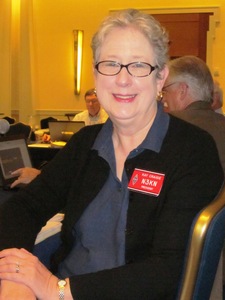
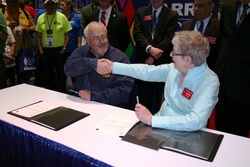
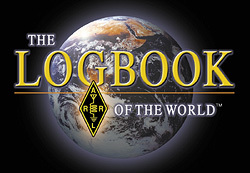 The Board adopted an updated policy for the League's popular Logbook of The World (
The Board adopted an updated policy for the League's popular Logbook of The World (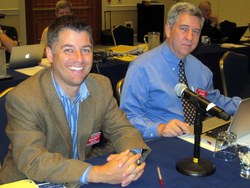
.jpg) The 2014 Hiram Percy Maxim Award -- the League's top youth honor -- went to Padraig Lysandrou, KC9UUS, of Bloomington, Indiana. The recipient of a Goldfarb Scholarship, Lysandrou (left) was cited for his demonstrated passion for HF DXing, his high school Amateur Radio club activity, his service as Indiana Assistant Section Manager for Youth Activities, and for actively sharing his love of Amateur Radio by being a presenter Dayton Hamvention and elsewhere. Lysandrou was the recipient of May 2013 QST Cover Plaque Award for his article "A Crazy Idea: DXpedition to Cyprus."
The 2014 Hiram Percy Maxim Award -- the League's top youth honor -- went to Padraig Lysandrou, KC9UUS, of Bloomington, Indiana. The recipient of a Goldfarb Scholarship, Lysandrou (left) was cited for his demonstrated passion for HF DXing, his high school Amateur Radio club activity, his service as Indiana Assistant Section Manager for Youth Activities, and for actively sharing his love of Amateur Radio by being a presenter Dayton Hamvention and elsewhere. Lysandrou was the recipient of May 2013 QST Cover Plaque Award for his article "A Crazy Idea: DXpedition to Cyprus."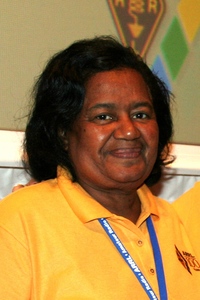 The Board granted the title of "ARRL Receptionist Emerita" to Penny Harts, N1NAG (left), who retired on July 31 following 46 years of service at ARRL Headquarters -- the longest tenure of any current Headquarters staff member. The Board's resolution recounted that after joining the staff in 1968, "Penny quickly established herself as the friendly voice and face of the ARRL to countless callers and visitors to Newington." She also earned her Amateur Radio license -- eventually upgrading to Amateur Extra class -- became active in local radio club affairs, and served as an ARRL Volunteer Examiner at more than 100 exam sessions. She "capped her career by providing invaluable assistance at the ARRL National Centennial Convention," the Board said, and, over the years, has been "an inspiring friend to her colleagues" as well as to volunteers and Board members.
The Board granted the title of "ARRL Receptionist Emerita" to Penny Harts, N1NAG (left), who retired on July 31 following 46 years of service at ARRL Headquarters -- the longest tenure of any current Headquarters staff member. The Board's resolution recounted that after joining the staff in 1968, "Penny quickly established herself as the friendly voice and face of the ARRL to countless callers and visitors to Newington." She also earned her Amateur Radio license -- eventually upgrading to Amateur Extra class -- became active in local radio club affairs, and served as an ARRL Volunteer Examiner at more than 100 exam sessions. She "capped her career by providing invaluable assistance at the ARRL National Centennial Convention," the Board said, and, over the years, has been "an inspiring friend to her colleagues" as well as to volunteers and Board members.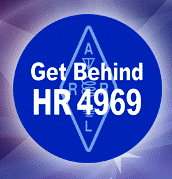 introduced in the US House of Representatives with bipartisan support in late June. Additional co-sponsors are anticipated. H.R. 4969 would call on the FCC to apply the "reasonable accommodation" three-part test of the
introduced in the US House of Representatives with bipartisan support in late June. Additional co-sponsors are anticipated. H.R. 4969 would call on the FCC to apply the "reasonable accommodation" three-part test of the 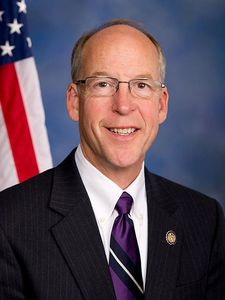
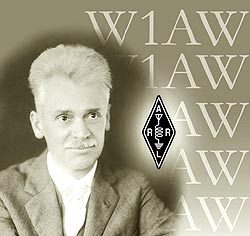 The
The .jpg) utilizing Spaceflight's
utilizing Spaceflight's 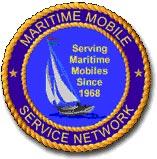 land-based emergencies too. That was the case recently when MMSN net control stations received distress calls regarding motor vehicle incidents in Nevada and Texas. On July 24, MMSN Net Control Station Ken Porter, AC0ML, was notified by HF mobile operator George Molnar, KF2T, that he had witnessed a tractor-trailer mishap on Nevada Highway 318. The rig had apparently skidded and landed on its side in a canyon, precluding the use of cell phone or Amateur Radio VHF/UHF systems.
land-based emergencies too. That was the case recently when MMSN net control stations received distress calls regarding motor vehicle incidents in Nevada and Texas. On July 24, MMSN Net Control Station Ken Porter, AC0ML, was notified by HF mobile operator George Molnar, KF2T, that he had witnessed a tractor-trailer mishap on Nevada Highway 318. The rig had apparently skidded and landed on its side in a canyon, precluding the use of cell phone or Amateur Radio VHF/UHF systems.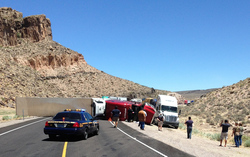
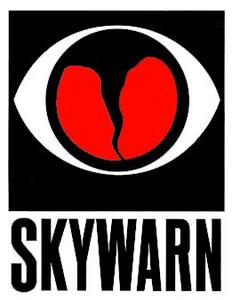 A super-cell storm system organized over northern Norfolk County, Massachusetts, on the morning of July 28 and raced through portions of northeastern Massachusetts, causing wind damage in sections of Needham, SKYWARN Coordinator and ARRL Eastern Massachusetts Assistant Section Emergency Coordinator Rob Macedo, KD1CY, reported.
A super-cell storm system organized over northern Norfolk County, Massachusetts, on the morning of July 28 and raced through portions of northeastern Massachusetts, causing wind damage in sections of Needham, SKYWARN Coordinator and ARRL Eastern Massachusetts Assistant Section Emergency Coordinator Rob Macedo, KD1CY, reported.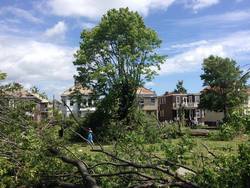
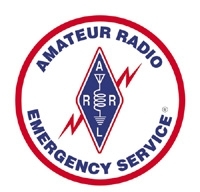 Portal Fire in Yosemite National Park. The National Park Service reported that the fire got its start in the community of El Portal on July 26, and evacuations were ordered for Foresta and Old El Portal, area campgrounds emptied, and roads closed.
Portal Fire in Yosemite National Park. The National Park Service reported that the fire got its start in the community of El Portal on July 26, and evacuations were ordered for Foresta and Old El Portal, area campgrounds emptied, and roads closed.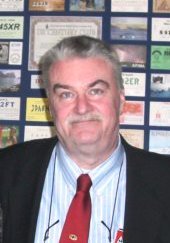
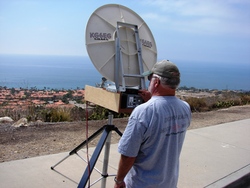
 During the contest Rookies can work anyone, while veteran operators only work Rookies. Experienced hams are also encouraged to host Rookies at their stations and to provide guidance during the contest. Single-Operator Rookie entrants can form teams, but teams must
During the contest Rookies can work anyone, while veteran operators only work Rookies. Experienced hams are also encouraged to host Rookies at their stations and to provide guidance during the contest. Single-Operator Rookie entrants can form teams, but teams must 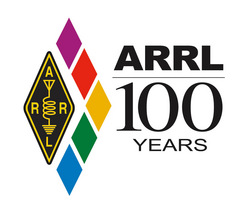 Major changes included relaxed logging requirements, which had always been stringent. The first rules governing repeaters were released. Novices were allowed to use VFOs, not just crystal control. The 2 meter sub-band for Technicians was expanded, allowing operation between 145 and 148 MHz. Phone allocations on the HF bands were widened.
Major changes included relaxed logging requirements, which had always been stringent. The first rules governing repeaters were released. Novices were allowed to use VFOs, not just crystal control. The 2 meter sub-band for Technicians was expanded, allowing operation between 145 and 148 MHz. Phone allocations on the HF bands were widened.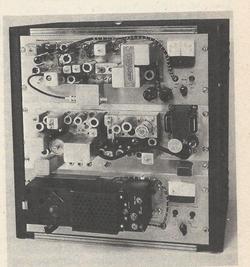
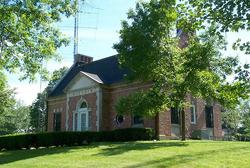 W100AW/4 August Activation Set from Huntsville Hamfest: The North Alabama DX Club will activate W100AW/4 from the
W100AW/4 August Activation Set from Huntsville Hamfest: The North Alabama DX Club will activate W100AW/4 from the 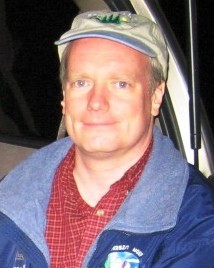 Brian Justin, WA1ZMS, Receives Brendan Medal: Microwave veteran Brian Justin, WA1ZMS, of Forest, Virginia, has been awarded the first triennial Brendan Medal by the Irish Radio Transmitters Society (
Brian Justin, WA1ZMS, Receives Brendan Medal: Microwave veteran Brian Justin, WA1ZMS, of Forest, Virginia, has been awarded the first triennial Brendan Medal by the Irish Radio Transmitters Society (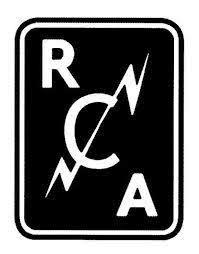 Radio Amateurs Are Among 2014 Radio Club of America Award Winners: The Radio Club of America,
Radio Amateurs Are Among 2014 Radio Club of America Award Winners: The Radio Club of America, 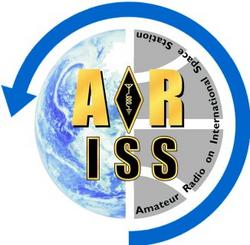 France Permits Third-Party Communication During ARISS Contacts: Telecommunications authorities in France now permit third-party communication with the International Space Station. This will allow unlicensed youngsters to speak directly with ISS crew members during Amateur Radio on the International Space Station (ARISS) educational contacts instead of through a licensed control operator. ARISS-EU Chair Gaston Bertels, ON4WF, reported that French State Secretary for Digital Affairs Axelle Lemaire recently authorized the direct participation, under the supervision of a licensed operator.
France Permits Third-Party Communication During ARISS Contacts: Telecommunications authorities in France now permit third-party communication with the International Space Station. This will allow unlicensed youngsters to speak directly with ISS crew members during Amateur Radio on the International Space Station (ARISS) educational contacts instead of through a licensed control operator. ARISS-EU Chair Gaston Bertels, ON4WF, reported that French State Secretary for Digital Affairs Axelle Lemaire recently authorized the direct participation, under the supervision of a licensed operator.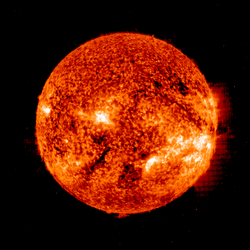 Predicted solar flux is 135 on August 7, 130 on August 8, 125 for August 9-10, then 120, 110 and 105 for August 11-13, respectively, 110 for August 14-16, 100 for August 17-19, 105 for August 20-21, 110 on August 22, 115 on August 23, 120 for August 24-26, 125 for August 27-28, 120 for August 29-30, and jumping to 150 on August 31 through September 3.
Predicted solar flux is 135 on August 7, 130 on August 8, 125 for August 9-10, then 120, 110 and 105 for August 11-13, respectively, 110 for August 14-16, 100 for August 17-19, 105 for August 20-21, 110 on August 22, 115 on August 23, 120 for August 24-26, 125 for August 27-28, 120 for August 29-30, and jumping to 150 on August 31 through September 3.







